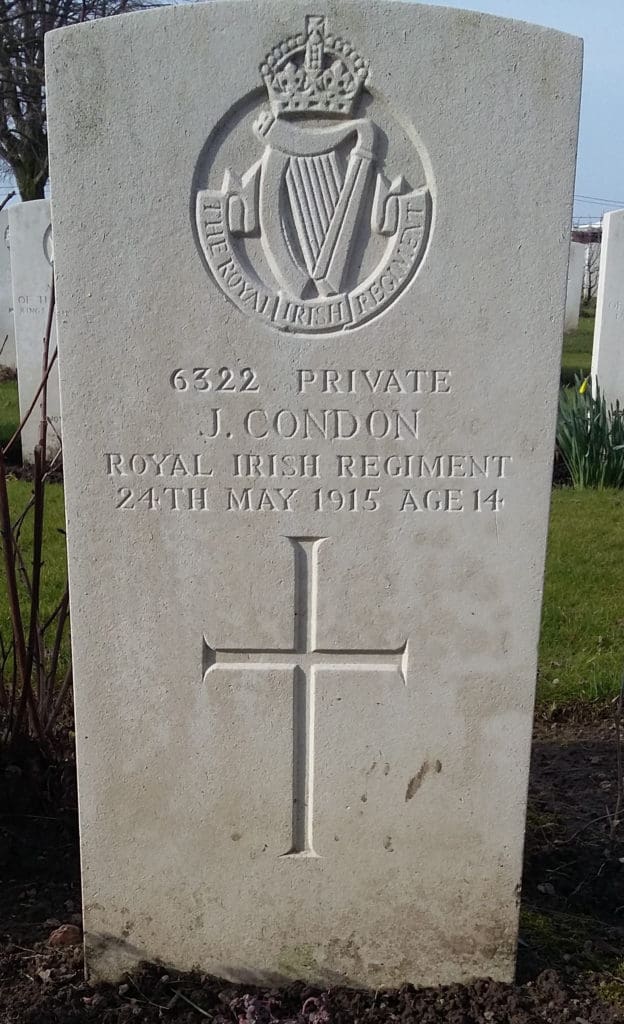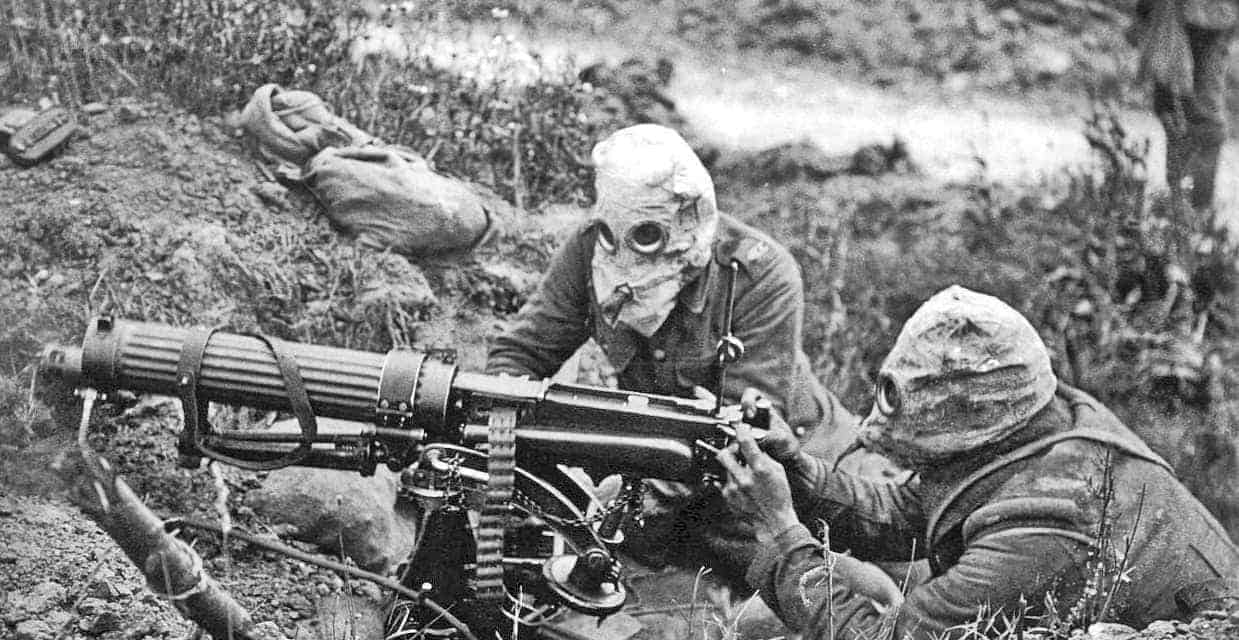World War I was the bloodiest conflict in history up until that time, but soldiers initially had a romantic idea about fighting for their country. At the beginning of the war in particular, young men willingly signed up. For those who lived in the United Kingdom and Ireland, it was an honor to take up arms and fight against the Central Powers.
Boys lied about their age to join the army, and the story of Private John Condon is one of the most poignant tales of all. There is some dispute as to his real age, but the tombstone of the boy from Waterford, Ireland says he died at the age of 14 at the Second Battle of the Ypres in 1915. This means he is the youngest soldier to perish in World War I.
The Boy Soldier
Condon was born in Waterford and enlisted in the Royal Irish Regiment’s 3rd Battalion in 1913. An estimated 4,800 people from Waterford were among the 400,000 Irish troops that fought in World War I. The 3rd Battalion was a reserve division, so the men only served part time. However, they knew it was possible for them to end up in active service during wartime.
Condon told the recruitment officer that he was born on October 24, 1895, which would make him 18 years old upon enlistment. The youngster trained with the regiment for four months before his return home. A recall followed in April 1914, and training lasted a month before another release. While Condon was hungry for action, he had to remain with the reserves until at least October 24, 1914, as 19 was the minimum age for overseas service. The only blemish on his military record occurred on November 28, when he committed a couple of minor offenses. Confinement to the barracks for four days was his punishment.

War & Early Death
Condon received his wish and saw active duty and was called up on December 16, 1914. He was part of the British Expeditionary Force’s 4th Infantry Division, so Private Condon took his post in France. The Battalion fought in a number of engagements known as the Second Battle of the Ypres in Belgium from April 22 to May 25, 1915.
John tragically met his end on the second to last day of the battle. In the early hours of May 24, the Germans launched a massive artillery attack followed by clouds of deadly chlorine gas. The gas spread across the four and a half mile front manned by members of the 2nd Battalion amongst others. John was one of nearly 400 people who died in the attack.
Condon was initially buried in a mass grave, but in 1923 the grave was dug up and his remains were identified. Condon’s body was moved to Poelcapelle Cemetery in Flanders, in what is today one of the most popular graves among tourists; only the Unknown Soldier’s resting place receives more visitors. But was Condon the youngest soldier to die in World War I?

